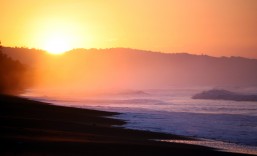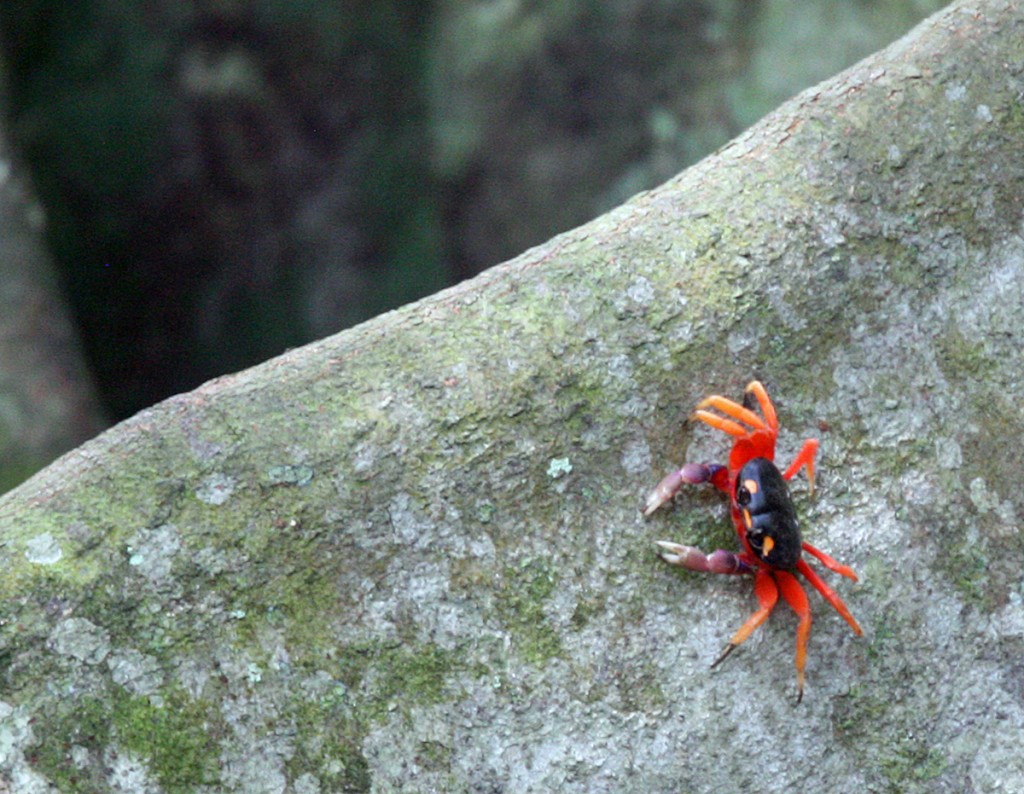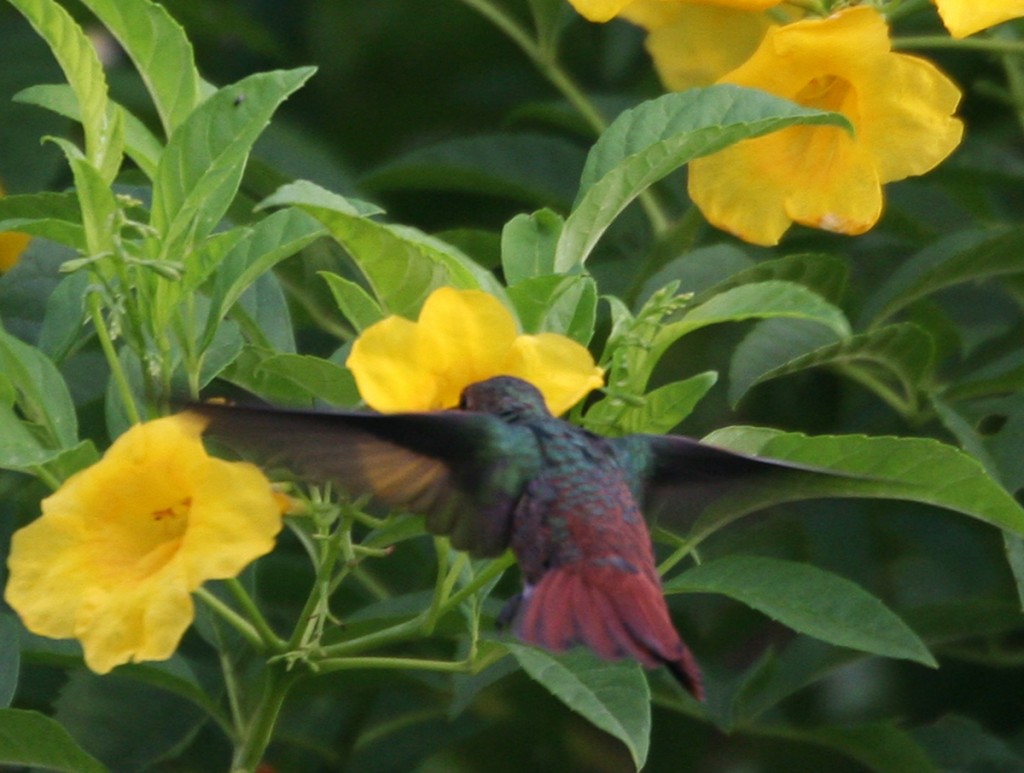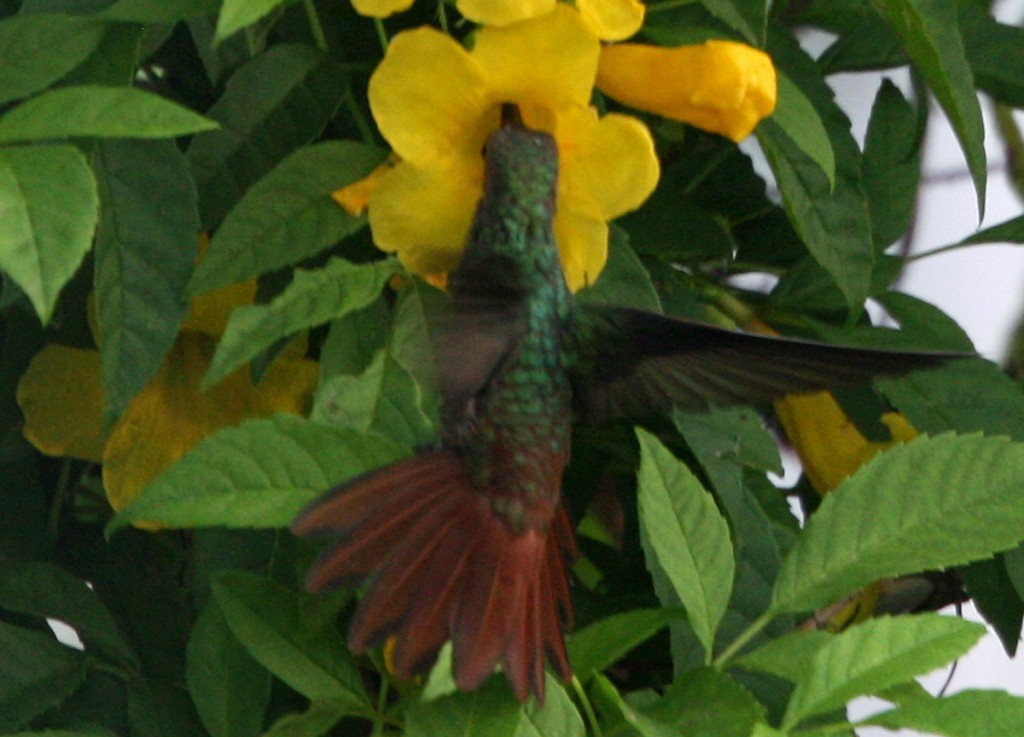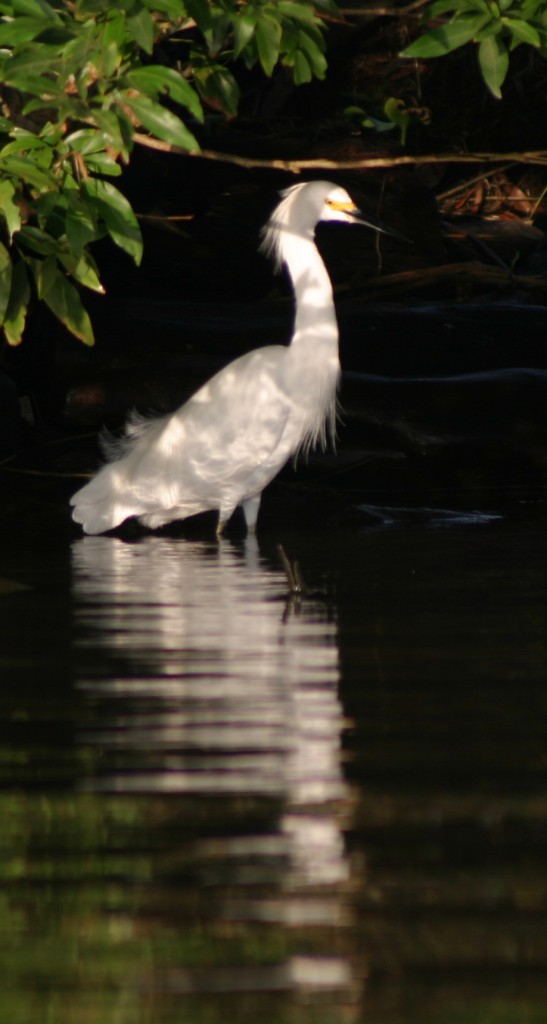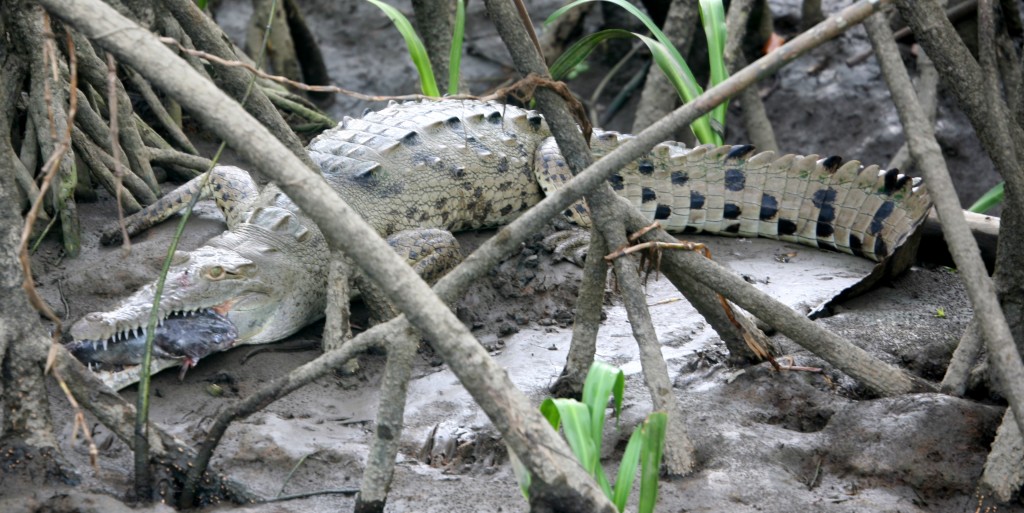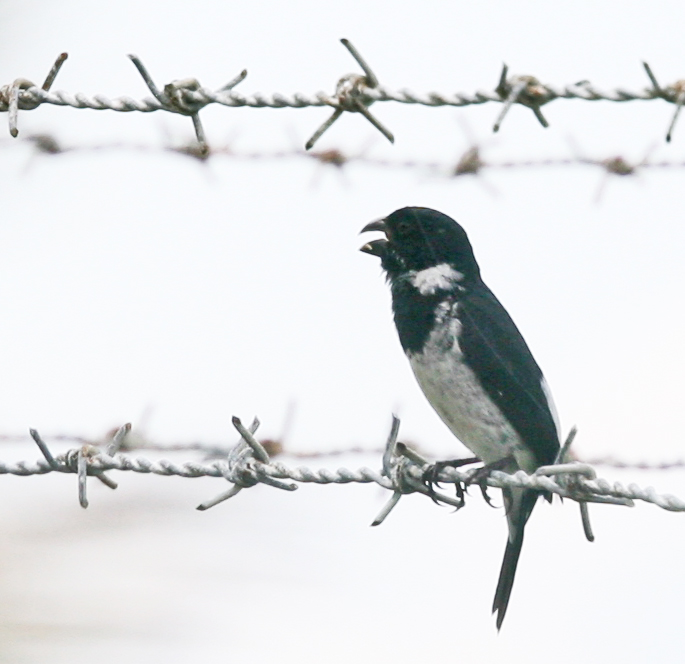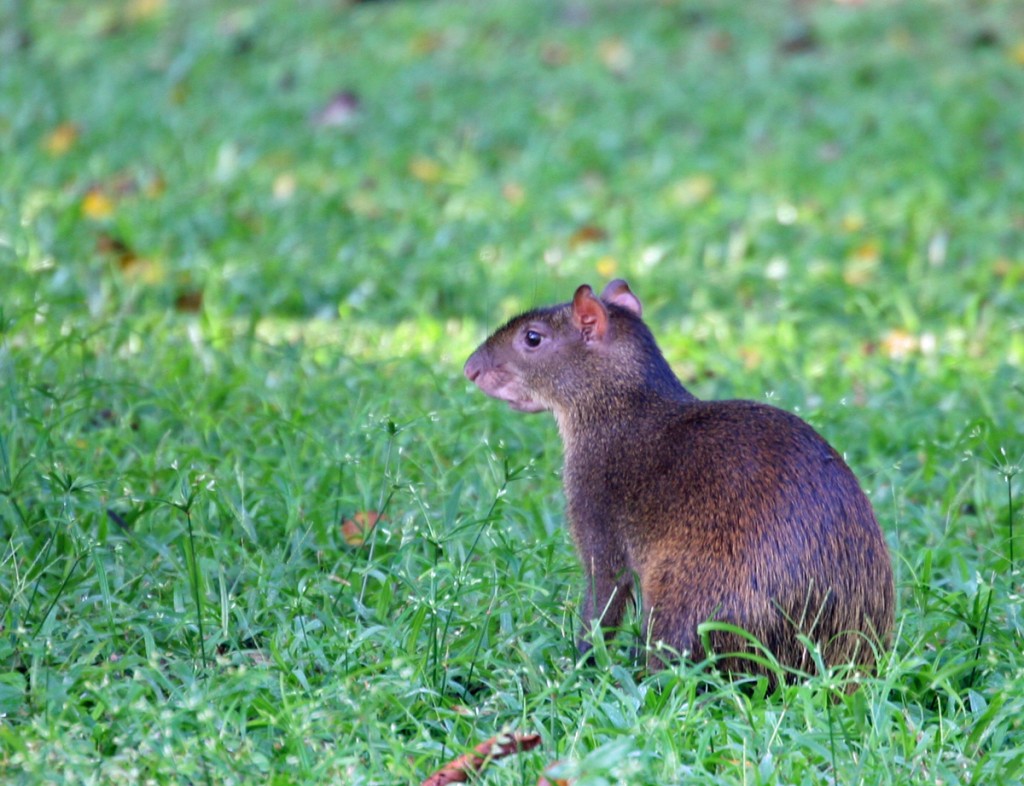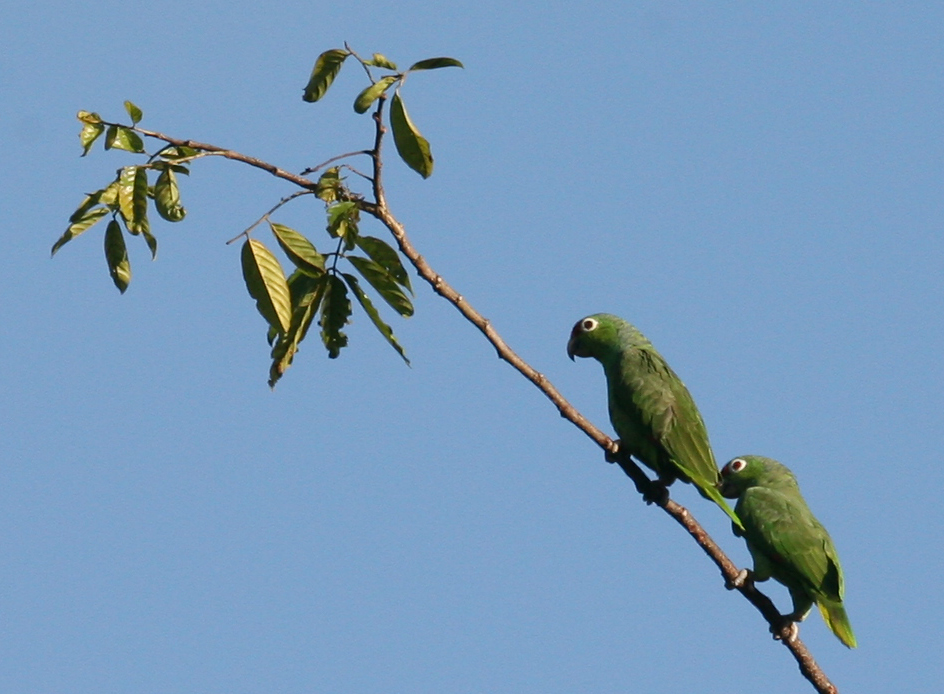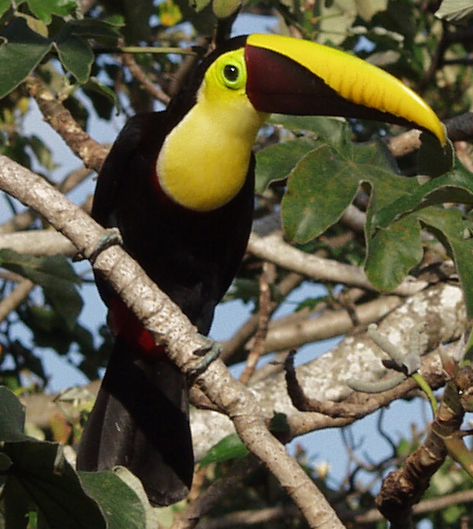
With feathers glistening in the dappled sunlight of the secondary rainforest, a male Black-throated Trogan proudly sits at attention.
Of the ten Trogan species in Costa Rica, the Black-throated Trogon (Trogon rufus) is the one I’ve seen most frequently. Dimorphic, the male is easily identified by the brilliant green head, yellow belly, and, of course, its black throat. Trogons are generally sedentary, and like to sit still on branches. As long as they aren’t startled, these handsome birds can be observed for quite awhile. Their mates are typically nearby, but often out of view.
All media is copyright costaricawildlife.net, 2013.
